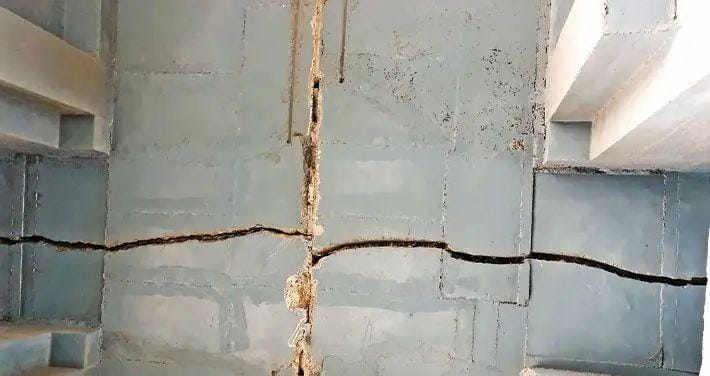A day after the Gambhira bridge collapse claimed 17 lives, concerns are mounting in Ahmedabad over another potentially hazardous structure—the Mumatpura Flyover on the SP Ring Road, connecting Bopal and Shela.
Residents in the area are voicing urgent concerns about the 853-metre-long flyover’s structural integrity, fearing it may be the city’s next disaster in waiting.
The flyover, which runs along the Sardar Patel Ring Road linking South Bopal and Shela, has a controversial history. On December 21, 2021, during its construction phase, a large section of the flyover collapsed—sparking public outrage and raising serious questions about construction quality. Despite delays, the bridge was completed and virtually inaugurated by Prime Minister Narendra Modi in May 2023, following final load testing.
But now, the spotlight is back on the flyover’s safety.
According to a media report, on July 10 uncovered four major fissures on the structure—long, prominent cracks that go well beyond superficial hairline flaws. These visible splits have alarmed daily commuters, many of whom now deliberately avoid using the flyover or even passing beneath it.
“We repeatedly reported water seepage through the cracks to the contractor, Ranjit Buildcon,” said a resident of Ghuma who frequently uses the route. “After what happened in Gambhira, seeing such flaws on this flyover is terrifying. We’re worried this could be the next collapse.”
Mukesh Singh, a South Bopal resident, expressed similar fears. “The cracks are clearly visible from a distance. Even if they are expansion joints, their irregular shape is unsettling. Plus, the tremors we feel when vehicles pass over make it worse. Why isn’t AUDA acting with urgency?”
AUDA Responds
Sanjay Patel, Executive Engineer at the Ahmedabad Urban Development Authority (AUDA), acknowledged the issue and said the contractor has been asked to carry out repairs under the Defect Liability Period (DLP). “We conduct annual inspections. There’s no cause for alarm,” he assured.
When questioned about the cracks, Patel explained that they are expansion joints—designed to absorb stress from thermal movement. These joints are typically filled with materials like thermocol (expanded polystyrene) and bitumen. Thermocol allows for expansion and contraction, while bitumen acts as a sealant to prevent water ingress.
“Over time, these materials can degrade, allowing water to seep in,” he said. “That’s why we periodically refill the joints.”
Residents Remain Skeptical
Despite AUDA’s explanation, residents remain unconvinced. “Why does AUDA always wait for public outcry to act?” asked a local closely tracking the project. “These defects were flagged last year too. If it’s still under DLP, why isn’t the contractor proactively maintaining it?”
The flyover’s troubled history only adds to the distrust. Initially awarded to Ranjit Buildcon with a deadline of September 2021, the project was delayed after the 2021 slab collapse. Now, residents claim that the very spot of the earlier collapse is showing fresh signs of cracking.
The combination of visible cracks, water seepage, vibrations, and an apparently sluggish response from authorities has left residents deeply worried. In the wake of the Gambhira tragedy, they fear that overlooking these warning signs could lead to another catastrophic failure.



